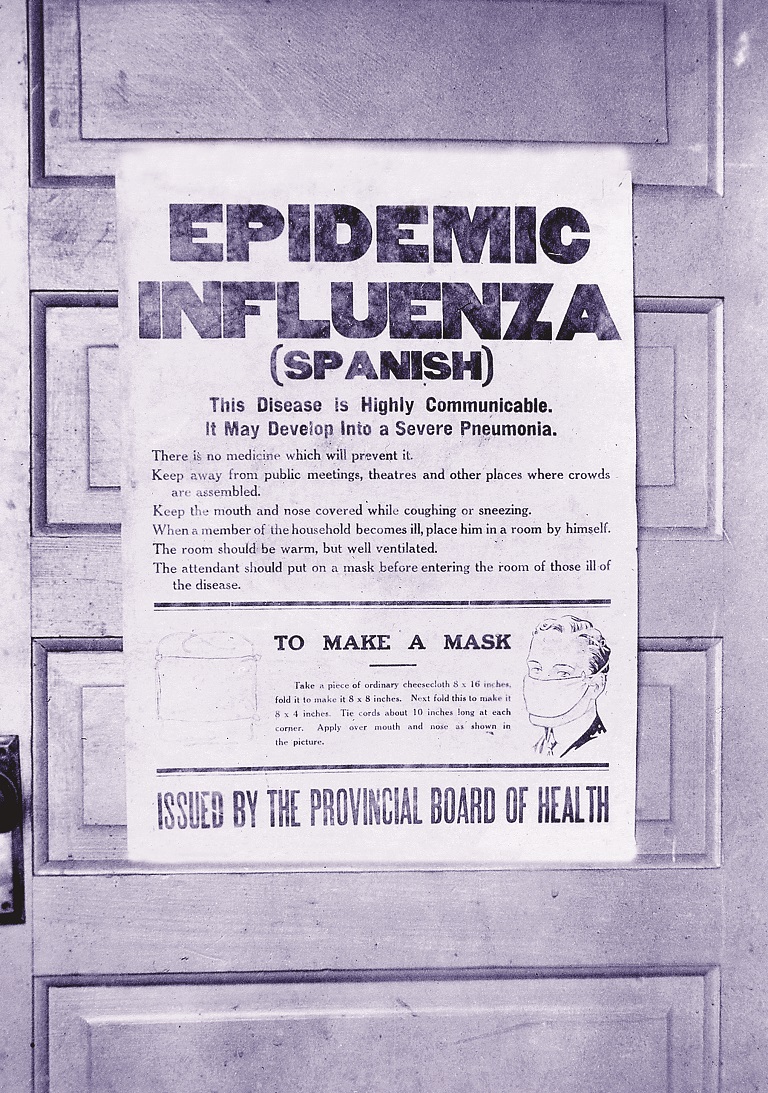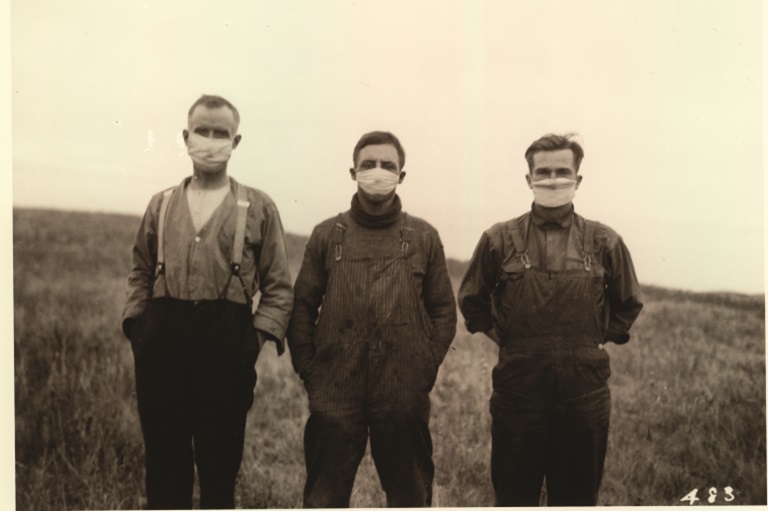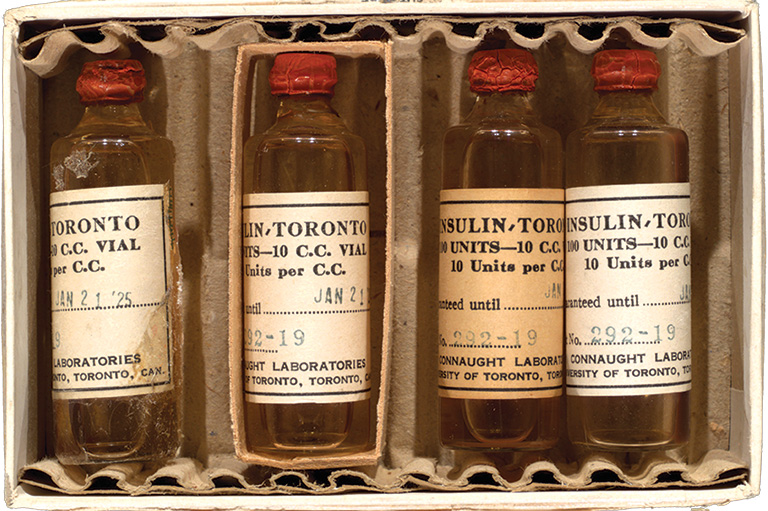Teaching COVID-19

Across the country, the COVID-19 pandemic has rapidly changed the ways we live our lives. For teachers and students, this has been most evident in the closing of schools. As classrooms turn to virtual learning environments, many history educators are thinking about how to discuss the coronavirus outbreak with their students.
What can we learn from past public health crises? How will we remember this moment in history? Whose stories and perspectives should we share? What lessons can we learn from this crisis and how should we apply those lessons?
Canada’s History has compiled resources from across Canada and the United States to help you navigate this difficult situation and teach about COVID-19. These activities will help students reflect on the coronavirus outbreak, analyze parallels to historic pandemics, and think critically about this moment in history. Above all, we hope these readings, resources, and activities will help start important conversations with your students.
Thinking Historically About Pandemics
The 7 Oaks School Division in Winnipeg has created a resource to help students think critically and historically about both the 1918 flu pandemic (the Spanish flu) and the COVID-19 pandemic.
Imagining a New “We” with Dr. Samantha Cutrara
Dr. Samantha Cutrara is a History Education Strategist and a Curriculum Specialist at York University. Her YouTube channel has numerous videos on how to teach history in pandemic times and a list of resources to historicize the Flu.
Defining Moments Canada
Since 2017, Defining Moments Canada has led a digital commemoration project on the 1918-1919 Flu Pandemic. Now they are asking, “What lessons can we learn from ‘the Spanish Flu’ pandemic?” Their website contains an extensive collection of academic research, popular writing, digital assets and learning resources.
From Bubonic Plague to Covid-19
This article from John Lorinc, a senior editor for Defining Moments Canada, is a reflection on Covid-19 and other pandemics. We should remember past pandemics not just for their own sakes, but to ward off the complacency that can leave our communities vulnerable to, and ravaged by, future epidemics.
Bringing the Flu into the Classroom
In this article, Thomas Peace, an assistant professor of Canadian History at Huron University College shares a replicable assignment that he used to engage students with the history of the 1918 flu pandemic.
Coordination, Capacity-Building, and Communication
This digital storytelling project, created by students at Northview Heights Secondary School in Toronto, tells stories of the decisions, actions, and responses of Toronto politicians, scientists, health care providers, public health educators, and community volunteers to the 1918-1920 flu epidemic. Check out this blog post to learn more about the educational approach behind the project.
The 1918 Influenza Epidemic in Prince George: Teacher’s Kit
This teaching kit, developed by the Northern BC Archives & Special Collections at the University of Northern British Columbia archivists, relies on primary source analysis to study the 1918 influenza epidemic in Prince George. Their additional activities focus on comparing the Flu to the COVID-19 experience.
Sufferin’ in Dufferin
The Museum of Dufferin has archived an online exhibit they created in 2018 to mark the one hundredth anniversary of the 1918 influenza pandemic. This document has been made availble as a free resource for educational purposes.
Support for Teachers During the COVID-19 Outbreak
Facing History and Ourselves has compiled resources, articles, and webinars that explore questions about community, responsibility, decision-making and upstanding that are relevant in this moment.
Coronavirus Resources: Teaching, Learning and Thinking Critically
This ever-updating resource from The New York Times Learning Network includes articles on current events, a coronavirus resource page for students, and advice for teaching and learning online. In their lesson “Photos from a Century of Epidemics,” students will explore global epidemics from the 1918 flu to Covid-19.
Sifting Through the Coronavirus Pandemic
The Infodemic Blog created by Mike Caulfield, a digital literacy expert at Washington State University, guides students through the digital literacy skills that will help them sort fact from fiction on the web.
Hope where are you?
Governor General History Award recipient Armand Doucet has co-written a book called Hope where are you?, which tells the story of six children around the world who are experiencing school closures because of the pandemic. The book is available for free online through the project website and all major app stores.
Share Your Story
The Canadian Museum for Human Rights is asking people to share their experiences during this time and answer the question, “What acts of kindness have lifted your spirits during the COVID-19 pandemic?”
#StayHomeSounds
Cities and Memory, a global collaborative sound project, is creating a sound map for the COVID-19 lockdown. They are asking people around the world to submit a recording and share their stories as we all adjust to a new way of living.
Stories from Self Isolation
Award-winning history teacher Katy Whitfield has launched a story collection project to gather the stories of how we are living during the COVID-19 pandemic in Canada and around the world. The goal is to continue to add to the stories and to check back in with narratives over time and as we progress through this unprecedented crisis.
Journal with the MoD
The Museum of Dufferin has launched a call-for-participation asking individuals to document their journey through the COVID-19 virus with writing, artwork and imagery. These journals will be donated to the MoD Archives at the end of the pandemic.
Covictory Garden Project
Ontario teacher Nathan Tidridge and his colleagues are encouraging students and families to grow “Covictory Gardens” this summer. These gardens are inspired by the Victory Gardens that were popular during both the First and Second World Wars as a way to contribute to the local food supply, as well as boost morale for families on the home front. You can follow along with their progress through the project website.
Curator Activity
Inspired by the Guelph Museums’ Twitter post, ask your students, “What artifacts and documents would you collect to tell your community’s story of COVID-19”
Journal Assignment
From the Alberta Teachers Association, this social studies and language arts assignment has students write daily reflections on their experiences during the pandemic.
Themes associated with this article
Advertisement






